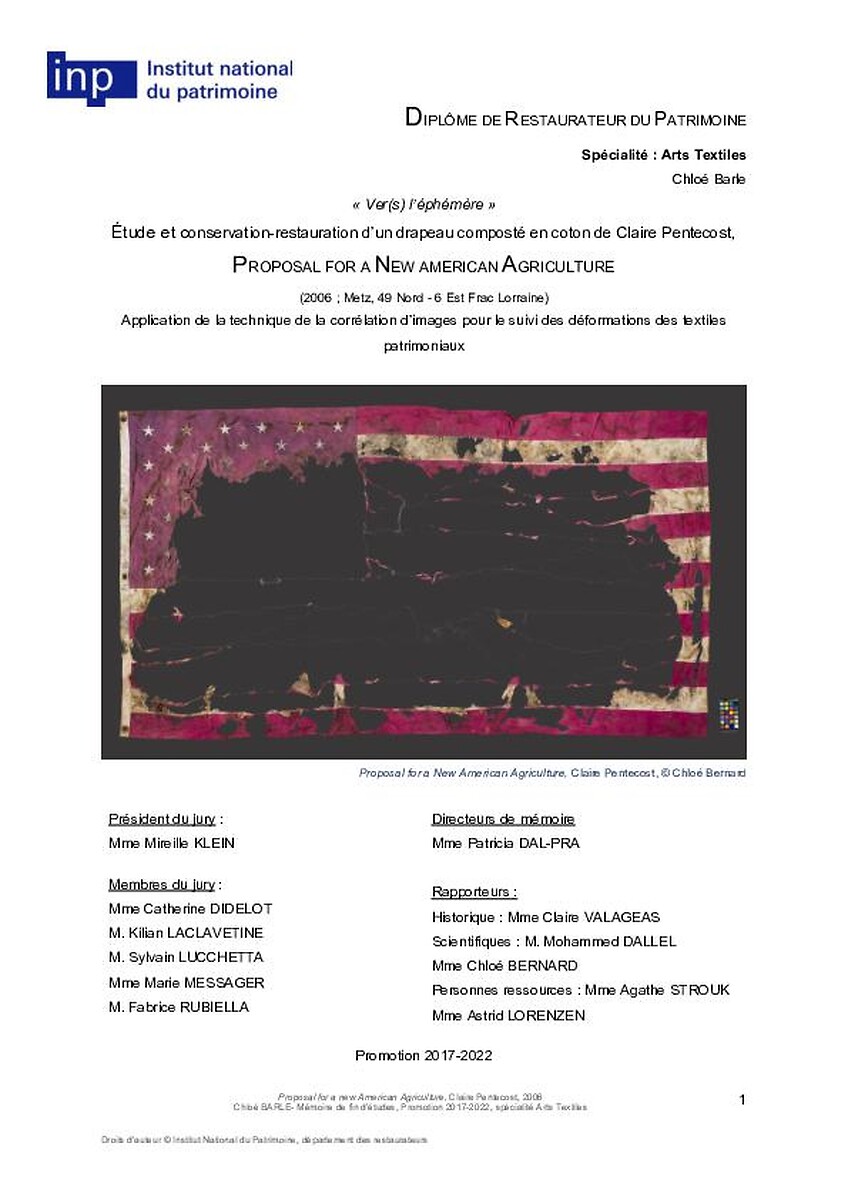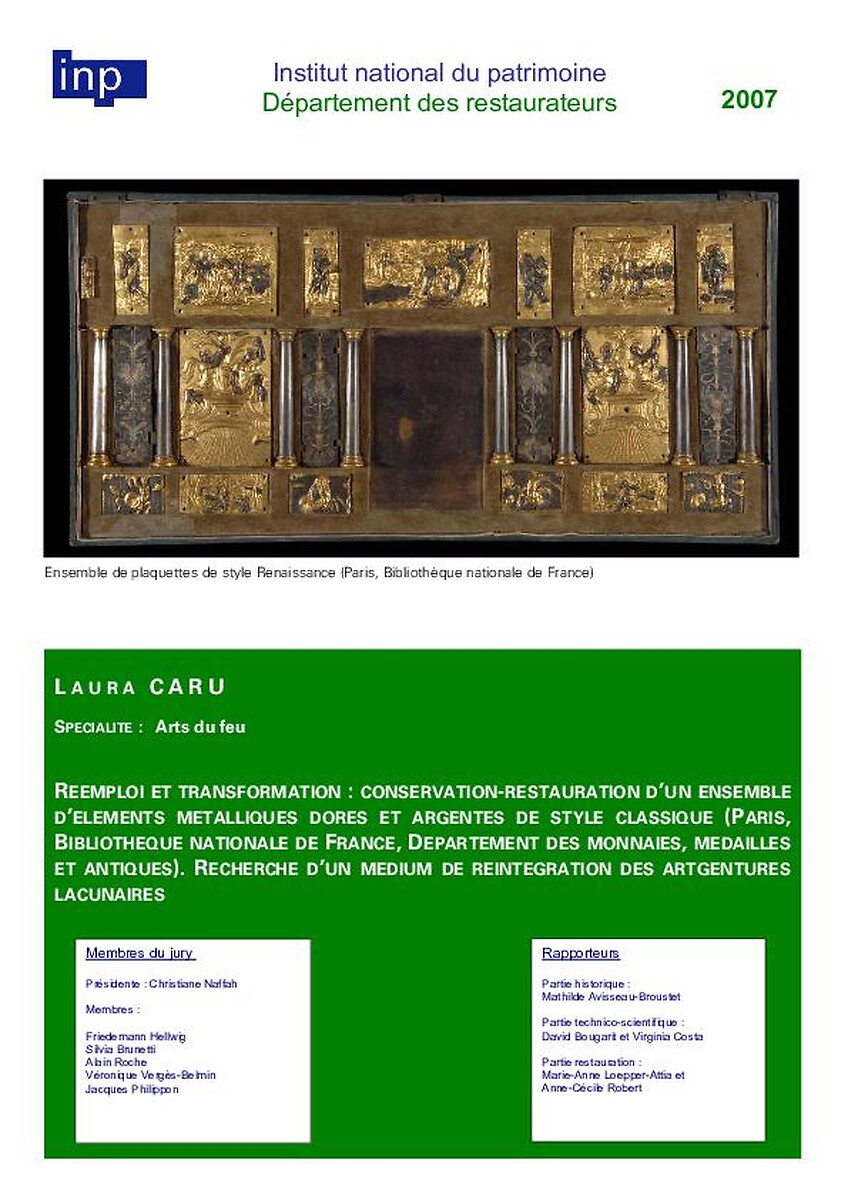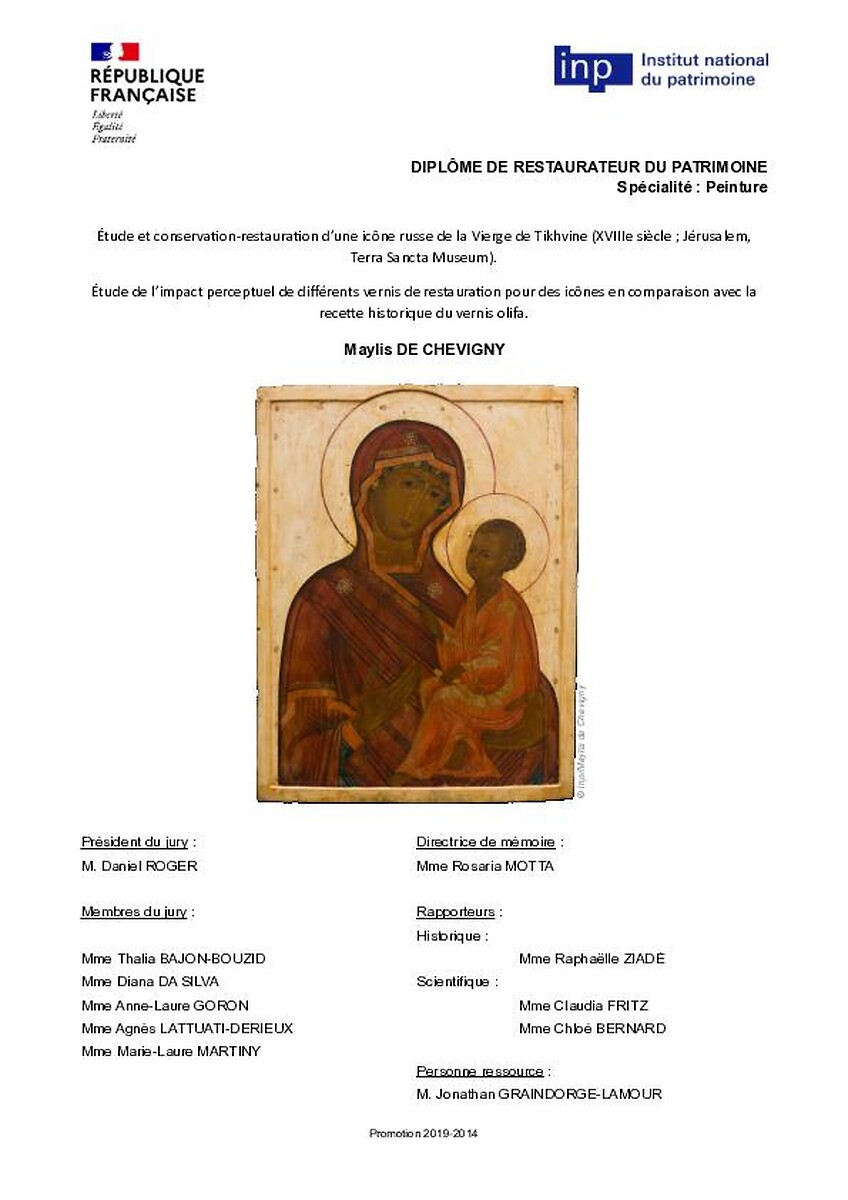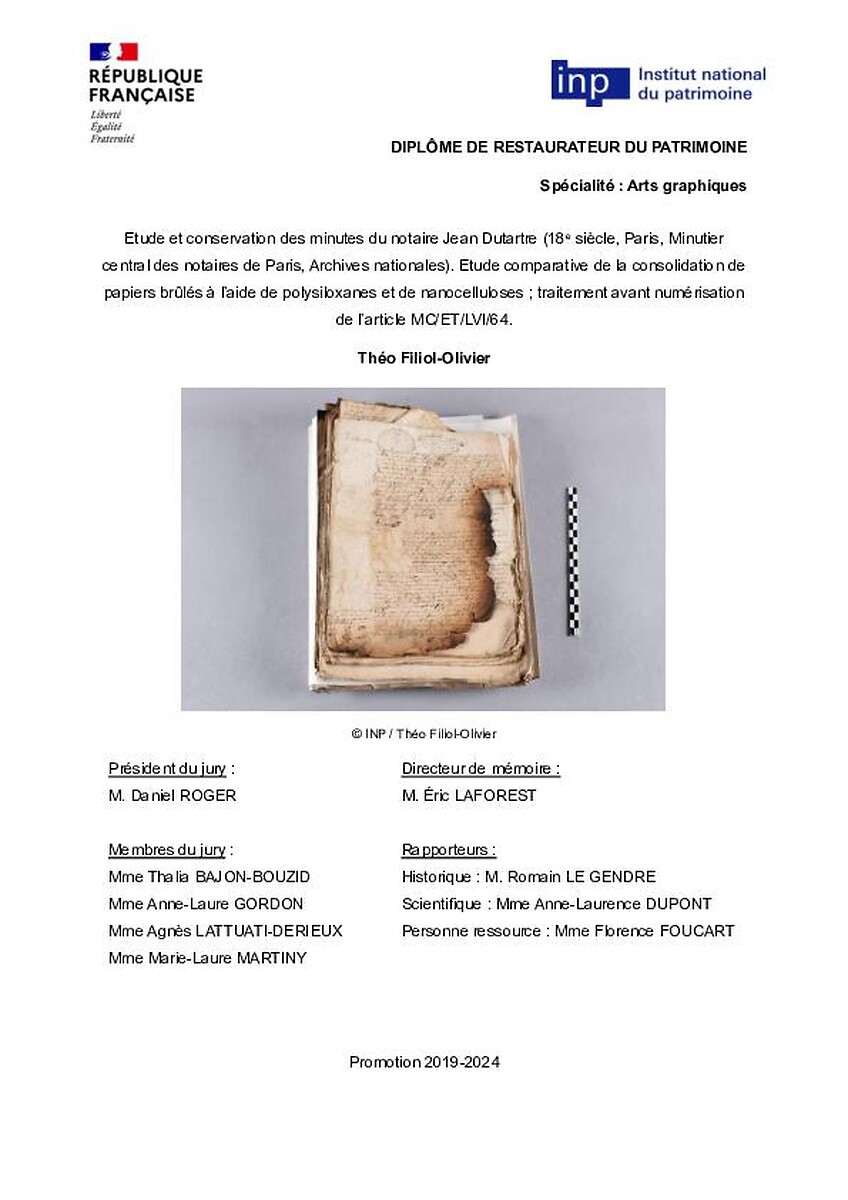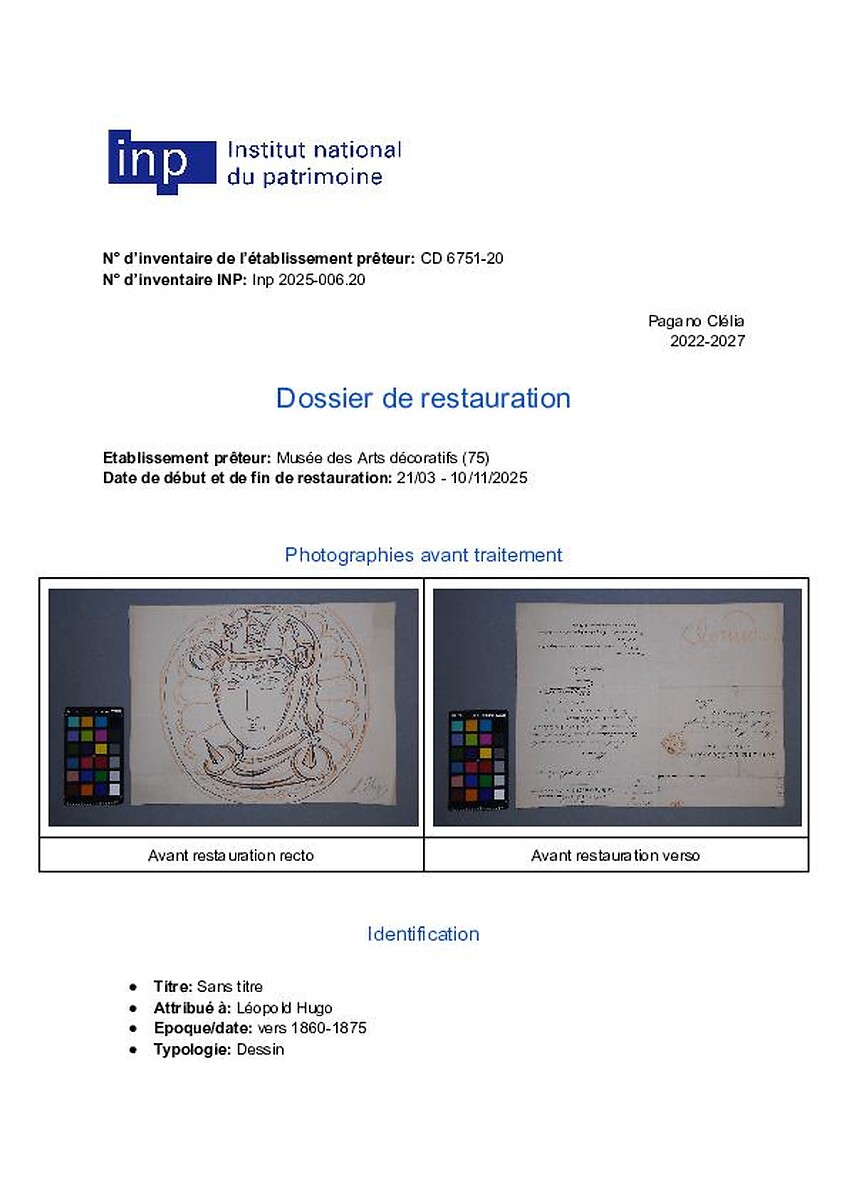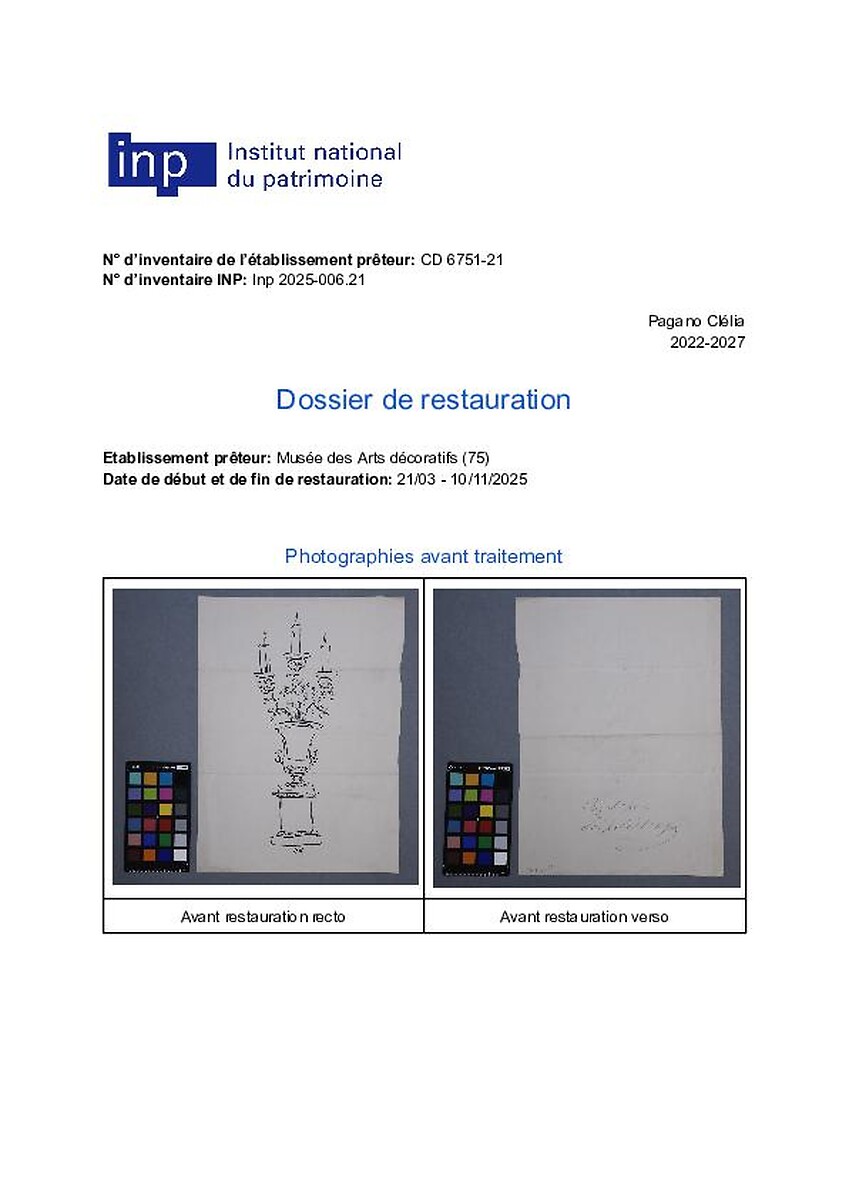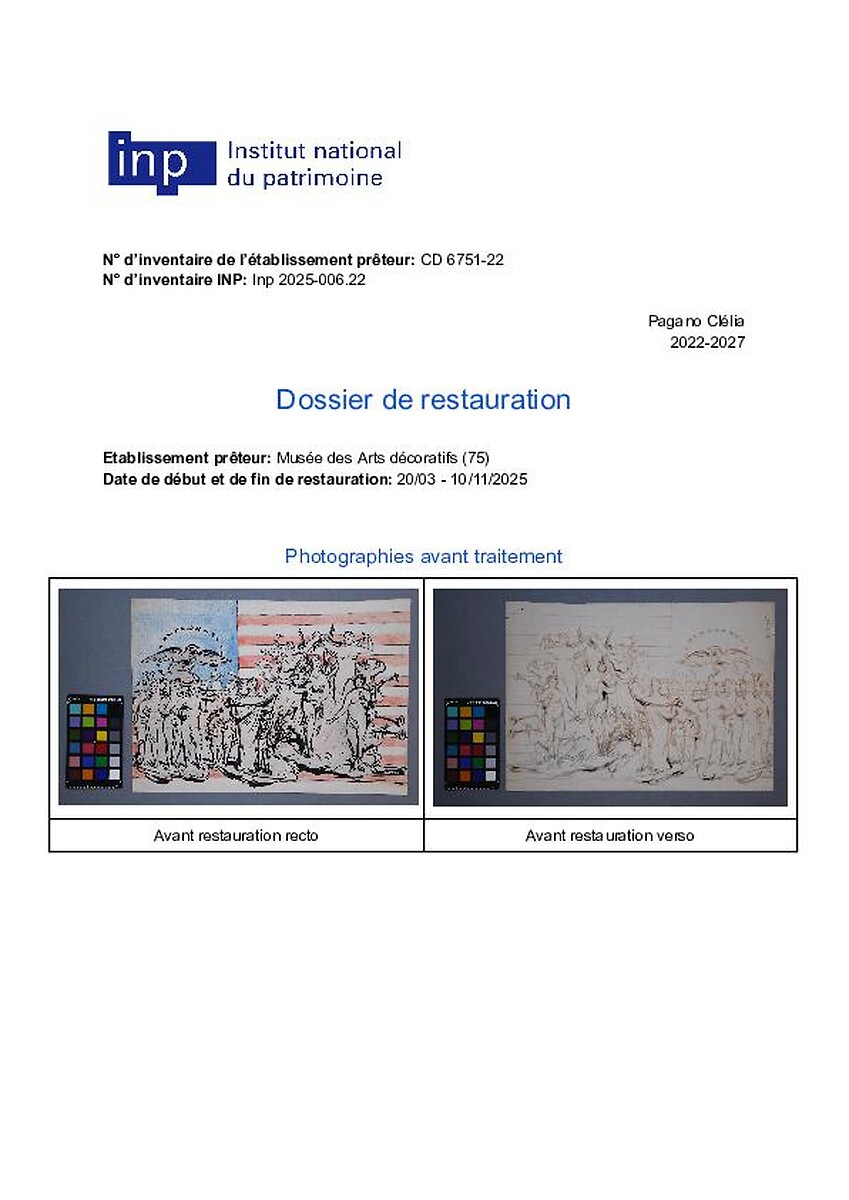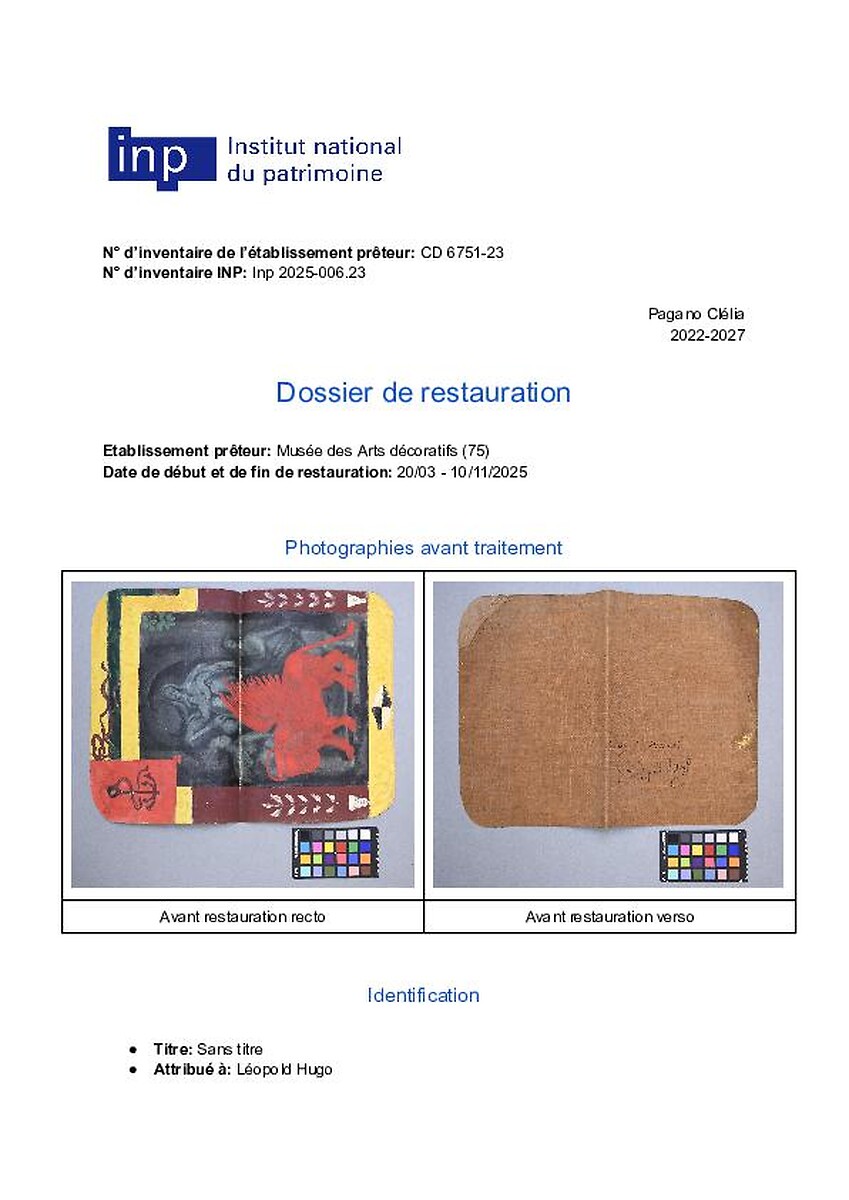"Histoires fragmentées." Étude et conservation-restauration d’un fonds de fragments de manuscrits médiévaux remployés en éléments de reliure (IXe-XVe siècles ; Pierrefitte-sur-Seine, Archives nationales) $e Améliorer la lisibilité d’un texte sur parchemi…
N° : 29483
application/pdf
- 61,9 Mo
- 554 page(s)
Description / Résumé
Ce mémoire porte sur l’étude et l’établissement d’un protocole de conservation-restauration d’un fonds de fragments de manuscrits médiévaux, remployés en éléments de reliure. Ce fonds, conservé aux Archives nationales (site de Pierrefitte-sur-Seine), a été constitué en 1925 à l’occasion d’une circulaire envoyée à tous les archivistes départementaux, leur demandant la communication d’objets de ce type conservés dans leurs magasins. Les périodes historiques durant lesquelles ces fragments ont été produits et remployés rendent ce fonds très hétérogène et très riche tant matériellement qu’historiquement.
Tant notre recherche technico-scientifique que notre projet de conservation-restauration se sont construits autour d'un chantier de numérisation. Ce dernier, qui se poursuivra sur plusieurs années, a pour objectif est de verser les fragments dans la base de données Fragmentarium.
L’étude technico-scientifique s’est tournée vers la recherche de moyens en imagerie permettant de retrouver la lisibilité des textes situés sous les résidus de papier ou de carton, dont l’origine est le remploi de ces fragments comme éléments de reliure. Les résultats ont permis de confirmer que des solutions simples et à faibles coûts permettent d’éviter une opération de retrait de ces résidus, qui porterait atteinte à l’histoire matérielle des fragments.
L’établissement d’un protocole de traitement s’est fait au regard des exigences liées au projet de numérisation, du respect de l’histoire matérielles des objets, et d’une demande d’optimisation du temps de travail, liée au contexte de masse. Il a été appliqué sur un échantillon de cinq fragments durant cette année de mémoire.
Tant notre recherche technico-scientifique que notre projet de conservation-restauration se sont construits autour d'un chantier de numérisation. Ce dernier, qui se poursuivra sur plusieurs années, a pour objectif est de verser les fragments dans la base de données Fragmentarium.
L’étude technico-scientifique s’est tournée vers la recherche de moyens en imagerie permettant de retrouver la lisibilité des textes situés sous les résidus de papier ou de carton, dont l’origine est le remploi de ces fragments comme éléments de reliure. Les résultats ont permis de confirmer que des solutions simples et à faibles coûts permettent d’éviter une opération de retrait de ces résidus, qui porterait atteinte à l’histoire matérielle des fragments.
L’établissement d’un protocole de traitement s’est fait au regard des exigences liées au projet de numérisation, du respect de l’histoire matérielles des objets, et d’une demande d’optimisation du temps de travail, liée au contexte de masse. Il a été appliqué sur un échantillon de cinq fragments durant cette année de mémoire.
Résumé en langue(s) étrangère(s)
The topic of this master’s thesis is the study and the implementation of a conservation treatment protocol for a collection of mediaeval manuscript fragments repurposed as bookbinding elements. That collection, kept in the French National Archives site of Pierrefite-sur-Seine, was created in 1925 at the prompting of a memorandum sent to all departmental archives in the country, asking for every object of that type that might be kept in their respective warehouse. The historical periods when those fragments were produced and repurposed make that collection highly diverse as well as highly valuable both materially and historically.
My technical and scientific study as well as my conservation and restauration project were devised to suit the specific demands of a larger digitisation project, whose undertaking over the next few years will lead to every fragment being uploaded to the Fragmentarium database.
The technical and scientific study focused on researching imaging processes that would make the texts beneath paper or cardboard residue - brought about by the fragments’ past use as bookbinding elements - legible again. The results confirmed that simple, cost-efficient solutions can be successfully employed to avoid removing those residues altogether, which would be detrimental to the material history of the fragments.
The conception of the conservation protocol was done in accordance with the demands arising from the digitisation project, the proper respect due to the material history of the objects, and the pragmatic requirement that work time be optimised in the context of that massive undertaking. It has been implemented on a sample of five fragments over this dissertation year.
My technical and scientific study as well as my conservation and restauration project were devised to suit the specific demands of a larger digitisation project, whose undertaking over the next few years will lead to every fragment being uploaded to the Fragmentarium database.
The technical and scientific study focused on researching imaging processes that would make the texts beneath paper or cardboard residue - brought about by the fragments’ past use as bookbinding elements - legible again. The results confirmed that simple, cost-efficient solutions can be successfully employed to avoid removing those residues altogether, which would be detrimental to the material history of the fragments.
The conception of the conservation protocol was done in accordance with the demands arising from the digitisation project, the proper respect due to the material history of the objects, and the pragmatic requirement that work time be optimised in the context of that massive undertaking. It has been implemented on a sample of five fragments over this dissertation year.
Auteur/artistes/intervenants
Direction scientifique ou pédagogique
Type de document
Institution(s) prêteuse(s) / Institution(s) partenaire(s)
Service producteur INP
Date de publication
Datation
Numéro de gestion de l'œuvre INP
Citer la ressource
Nalin, Claire, ""Histoires fragmentées." Étude et conservation-restauration d’un fonds de fragments de manuscrits médiévaux remployés en éléments de reliure (IXe-XVe siècles ; Pierrefitte-sur-Seine, Archives nationales) $e Améliorer la lisibilité d’un texte sur parchemi…", Médiathèque numérique de l'Inp, 02 octobre 2023 (consulté le 19 décembre 2025), https://mediatheque-numerique.inp.fr/documentation-oeuvres/memoires-diplome-restaurateurs-patrimoine/histoires-fragmentees-etude-conservation-restauration-dun-fonds-fragments-manuscrits-medievaux-remployes-en-elements-reliure-ixe-xve
Type de licence
Tous droits réservés
Conditions d'utilisation
Cette ressource constitue une œuvre protégée par les lois en vigueur sur la propriété intellectuelle, dont les producteurs sont titulaires. Aucune exploitation commerciale, reproduction, représentation, utilisation, adaptation, modification, incorporation, traduction, commercialisation, partielle ou intégrale des éléments de cette ressource ne pourra en être faite sans l’accord préalable et écrit des ayants droit, à l’exception de l’utilisation pour un usage privé sous réserve des dispositions différentes voire plus restrictives du Code de la propriété intellectuelle.



